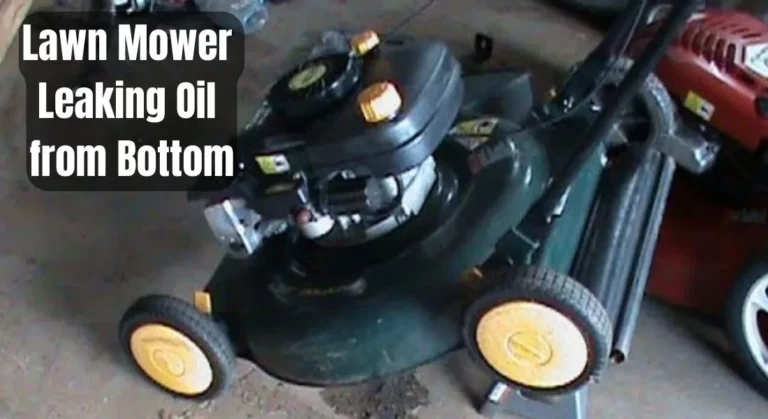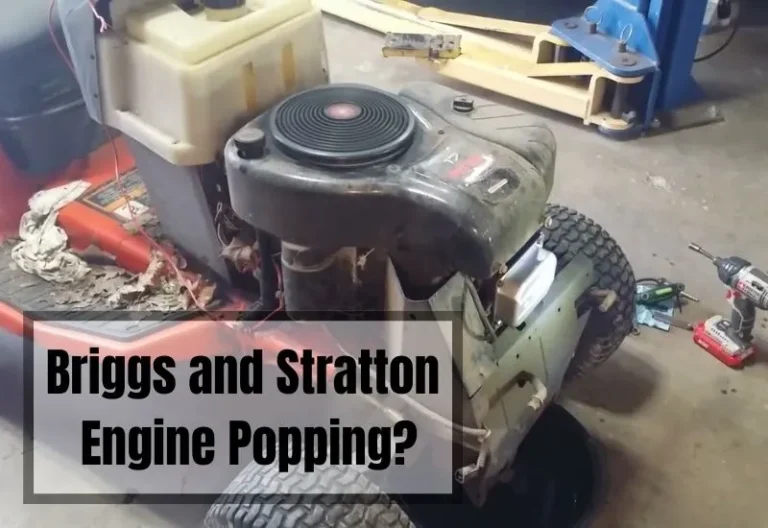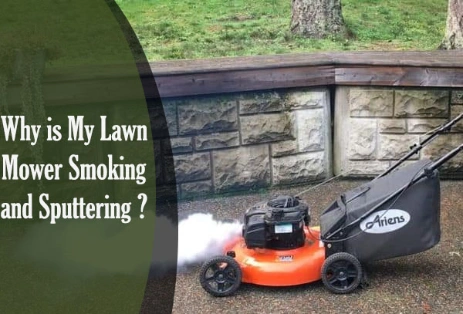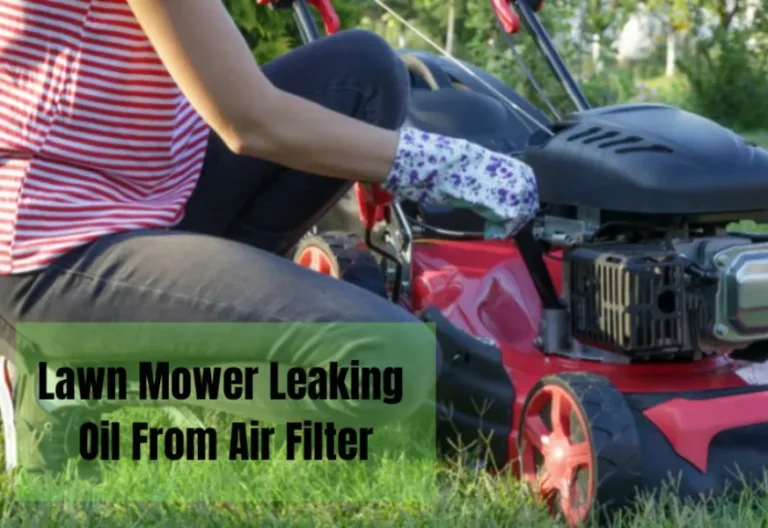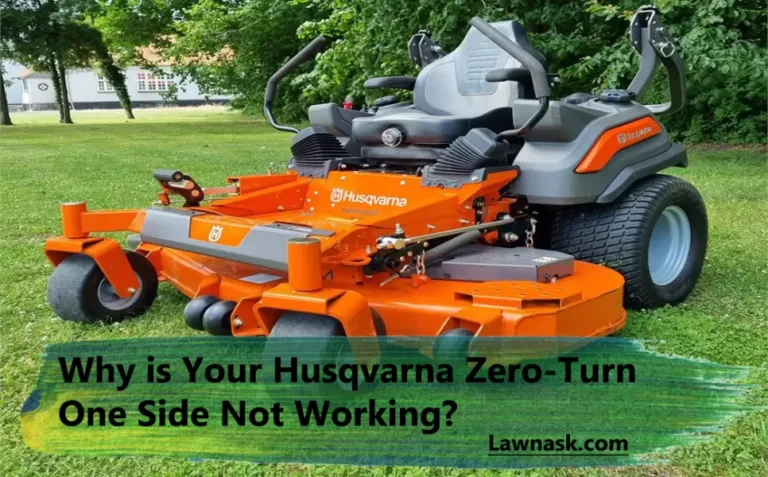Why Mower Only Starts When I Jump Solenoid (Fixes Added!)
Nothing is more frustrating than eagerly preparing to mow your lawn, only to discover that your mower refuses to start. But is it starting only when you jump the solenoid? Then you might’ve found the clue to an underlying issue!
Here are some of the common reasons why this happens:
- Fix a Faulty Connection
- Replace a Weak Battery
- Troubleshoot Faulty Wiring
- Troubleshoot Solenoid
- Clear the Safety Switch Issues
Reading this article, you will get to fix your mower that only starts when you jump the solenoid.
How the Solenoid Plays a Role in Starting Your Mower
There are two posts in the solenoid. When the electromagnet engages, it raises a metal bar, which connects the two terminals.
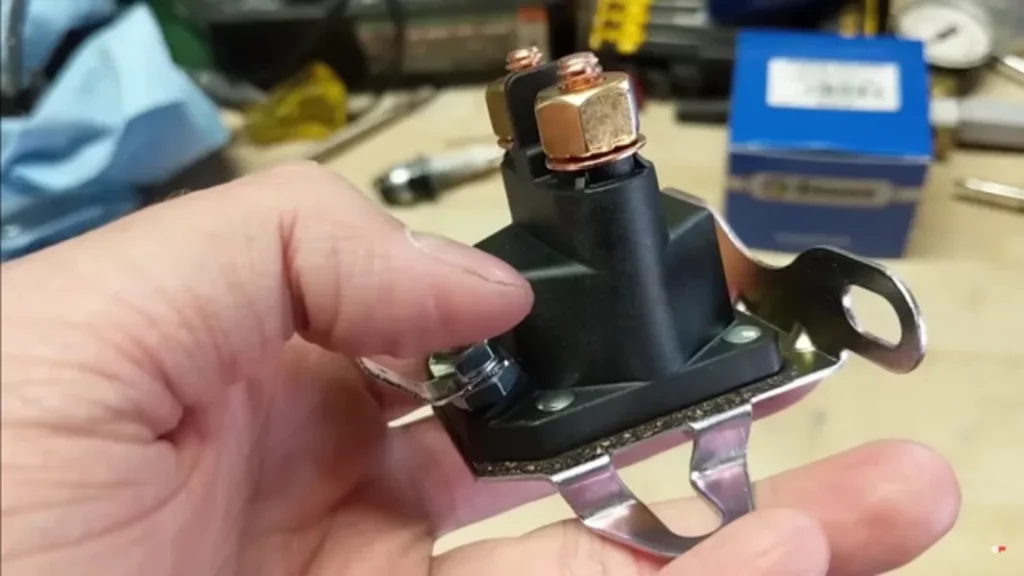
These terminals basically have one wire coming down from the battery (positive terminal). Another cable from the opposite terminal connects to the starter on your riding lawnmower.
When you turn the key, 12 volts are sent from your battery to the key switch and then down into the solenoid. When the solenoid clicks, the electromagnet is activated.
Then, that electromagnet picks up and connects your battery to your starter. That is what causes your starter to spin.
When you release the key switch, the solenoid discharges, which in turn discharges the electromagnet. As a result, the 12 volts from your battery to your starter cable are disconnected.
Related Post: Are Lawn Mower Solenoids Universal? Complete Guidelines
Reasons Why the Mower Only Starts When I Jump Solenoid with Step-By-Step Solution Guide
Here’s why your mower only starts when you jump the solenoid:
1. Fix a Faulty Connection
A starter needing to be jumped sounds like a corroded connection somewhere. It could also perhaps be a loose wire. At least it isn’t the solenoid if it kicks over.
Check the hot wire going to the starter. Wires going to the solenoid as well. Additionally, mowers fail to start on account of loose nuts often.
Check where the battery wire goes into the starter. Make sure that the inside nut and the outside nut are tight.
The electrical connections must be clean and tight. It might be making the voltage jump the gap somewhere.
2. Replace a Weak Battery
If the fuel solenoid clicks, the starter solenoid, ‘klacks’ and the clutch solenoid ( where fitted ) ‘klunks’, then the safety switches are fine and dandy! You may have a weak battery.
Conduct the following test:
- Before you start, pull the spark plug & try to rotate the engine by hand.
- No use checking the electrics if you have a hydraulic lock, seized engine, or jammed belt overloading the starter motor. If the engine runs freely, continue with the following.
- Try to jump the starter motor directly from your car or truck.
- Starter turns = starter good.
- Do the same directly from the mower’s battery.
- Starter turns = mower battery good.
- No turn = duff battery, recharge it & try again.
- Check for voltage ( + 12V ) at the solenoid trigger wire with the key in the start position.
- Do the same with the ground trigger wire (in 4-wire solenoids) or the body of the solenoid (3-wire solenoids).
- Leave the ground jumper in place ( from step 2 ) & try key start.
- Starter turns = power connection good but ground connection suspect (most common).
- Remove the trigger wire/wires from the solenoid.
- Ground one & bridge from the hot terminal to the other.
- Starter cranks = solenoid good.
Troubleshoot accordingly for each step. But the stated tests effectively determine a weak battery. Replace the battery if all else is good.
3. Troubleshoot Faulty Wiring
If the solenoid, battery and connections are good, then faulty wiring is what you need to troubleshoot.
Do continuity checks to make sure a ground hasn’t broken inside insulation so that it looks good but isn’t actually doing its job. You’re gonna have to do this with all the ground wires.
Disconnect the ground from the chassis and hook it straight to (-) on battery. If this still makes them work, they are okay but might need cleaning up.
Change the wires that you find damaged.
4. Troubleshoot Solenoid
Frequent blowing of fuses, coupled with intermittent starting issues indicate bad solenoid. The test described in the second problem will further confirm this.
So what can you do when the starter is problematic?
Wear and tear, electrical problems, overheating, and manufacturing defects.
Before working on the mower, ensure the engine is turned off. Disconnect the spark plug wire. Locate the solenoid and check for any visible signs of damage. Replace the solenoid if it is faulty.
5. Clear the Safety Switch Issues
The safety switch is the issue if the starter solenoid clicks but will not send current to the starter motor. Even after the new solenoid was installed.
Originally the mower would stall once in a while when mowing on a hill (going sideways). It continually gets worse, mostly on hills, but even on level ground.
One of the most common causes is a faulty seat safety switch. If the operator leaves the seat while the blades are engaged or the transmission is in gear, this switch will turn off the engine.
If the switch fails to detect when the operator is seated, the engine will shut down unexpectedly.
You should do the following:
- Examine the safety switch to see if it is loose or damaged. Debris or dirt can also cause the issue.
- Make sure the switch is clean and securely connected. If the switch is damaged, it may be necessary to replace it.
Related Post: Symptoms of a Bad Solenoid on Riding Lawn Mower!
The Cost of Repairing or Replacing the Mower Jump Starting Issues
You have the option of repairing the solenoid yourself. The cost, in this case, will be the purchase of a new solenoid. This can range from $10 to $50 depending on the brand and quality. DIY repairs save money on labor.
Labor costs between $50 and $100 per hour on average. The total cost, including parts and labor, could range from $100 to $300 or more.
Some manufacturers sell solenoid replacement kits, which include the solenoid, wiring harness, and other components. These kits are more expensive than purchasing just the solenoid. But they provide a more convenient and comprehensive solution.
Depending on the brand and model, a solenoid replacement kit can cost $50 to $150 or more.
Mower Only Starts When I Jump Solenoid – FAQs
Can I continue using my mower by jumping the solenoid indefinitely?
No, it is not recommended for long-term use. Relying on this method indefinitely can put additional strain on your mower’s electrical system. It will potentially lead to further damage.
What are the common causes of solenoid issues?
The most common causes of solenoid issues in a mower are a faulty solenoid, a weak or dead battery, or a loose or corroded connection.
How do you test a mower solenoid?
Disconnect the battery, locate the solenoid, check for continuity and test the large terminals.
What are the symptoms of a bad mower solenoid?
The engine failing to start when the ignition key is turned, a clicking sound when attempting to start the mower, and the need to jump-start the solenoid for the engine to start. Additionally, intermittent starting issues, a complete loss of electrical power, or a burning smell near the solenoid may also be some symptoms.
What is the most common failure of solenoid?
A faulty or worn-out internal contact.
Related Posts:


